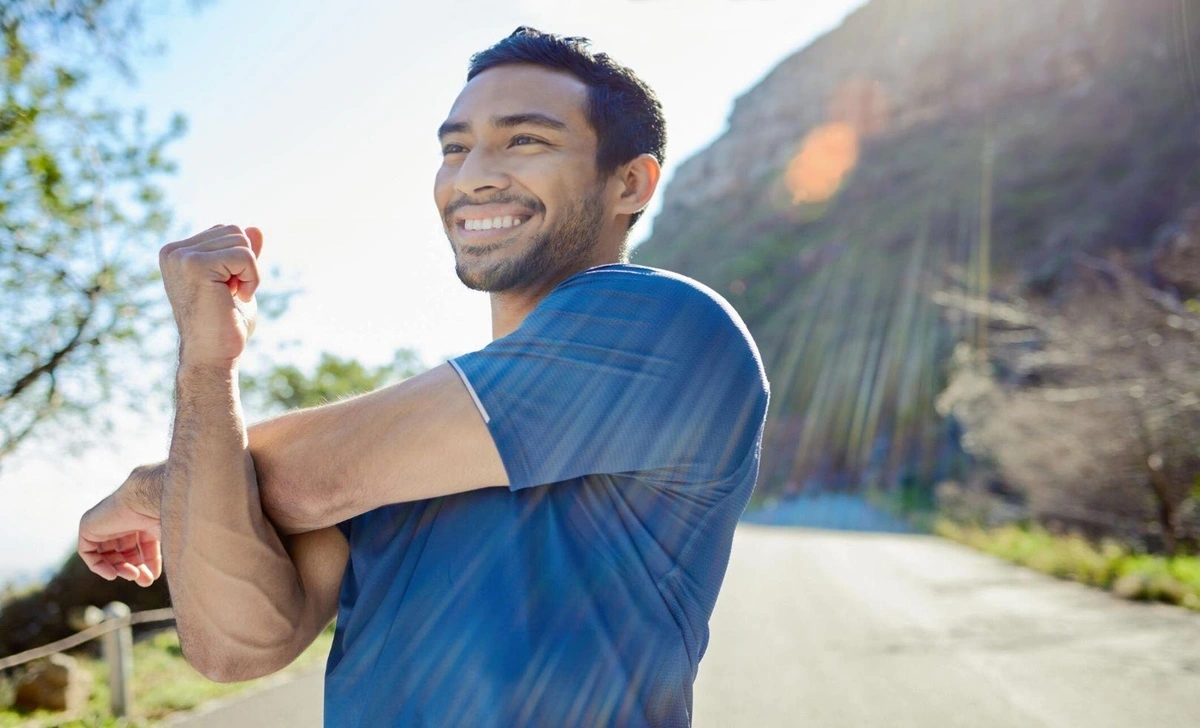In today’s fast-paced society, where technology often dominates our daily lives, it’s essential to carve out time to reconnect with nature and prioritize our health and well-being. Outdoor fitness offers a holistic approach to physical and mental wellness, combining the benefits of exercise with the rejuvenating power of the natural world. In this Ultimate Outdoor Fitness Guide, we’ll delve deep into the advantages of outdoor fitness, explore a variety of activities to suit every preference and fitness level, and provide expert tips and strategies for maximizing your outdoor workout experience.
Table of Contents
ToggleBenefits of Outdoor Fitness
The benefits of outdoor fitness extend far beyond physical health, encompassing mental, emotional, and social well-being. Let’s explore these benefits in more detail:
1. Physical Benefits
Outdoor fitness provides an excellent opportunity to engage in cardiovascular exercise, strength training, and flexibility work, all while enjoying the beauty of the outdoors. Activities such as hiking, cycling, and trail running help improve cardiovascular health, enhance muscular strength and endurance, and promote weight management.
Additionally, outdoor workouts often involve navigating varied terrain, which challenges different muscle groups and improves balance and coordination. Unlike the monotony of indoor gym workouts, outdoor activities offer a dynamic and ever-changing environment that keeps both body and mind engaged.
2. Mental Health Benefits
Stepping into nature is like stepping into a sanctuary for your mind. Scientific studies have shown that spending time in natural environments can significantly reduce stress, anxiety, and depression while fostering a sense of calm, relaxation, and overall well-being. The peacefulness of nature, accompanied by the gentle melodies of birds and rustling leaves, creates an environment that can help you escape the pressures of modern life, allowing you to feel more calm and relaxed.
Furthermore, outdoor exercise stimulates the release of endorphins, serotonin, and dopamine—neurotransmitters commonly referred to as “feel-good” chemicals—which contribute to improved mood, enhanced mental clarity, and a greater sense of happiness and contentment.
3. Emotional Benefits
Engaging in outdoor fitness fosters a deep connection with nature and cultivates a sense of awe and appreciation for the natural world. Whether you’re summiting a mountain peak, traversing a forest trail, or meditating beside a tranquil stream, outdoor activities awaken the senses and evoke a profound sense of wonder and gratitude.
Moreover, the sense of accomplishment that comes from conquering physical challenges in nature—whether it’s completing a difficult hike or conquering a fear of heights—can significantly boost your self-confidence, resilience, and self-esteem. This empowerment can then be carried over to other areas of your life, helping you overcome obstacles and achieve your goals.
4. Social Benefits
Outdoor fitness is not just about the individual, it’s also about the community. It provides an excellent opportunity to connect with like-minded individuals, build meaningful relationships, and foster a sense of belonging. Whether you’re joining a local hiking group, participating in outdoor yoga classes, or embarking on a group cycling excursion, shared outdoor experiences create bonds that transcend age, background, and social status, making you feel part of a larger community.
Furthermore, outdoor fitness encourages collaboration, teamwork, and mutual support as individuals work together to overcome challenges, navigate unfamiliar terrain, and achieve common goals. These shared experiences strengthen interpersonal connections and create lasting memories that enrich our lives and deepen our sense of connection to the world around us.
Types of Outdoor Activities

One of the greatest advantages of outdoor fitness is the sheer variety of activities available, catering to individuals of all ages, fitness levels, and interests. Whether you prefer the adrenaline rush of high-intensity workouts or the serenity of mindful movement, there’s an outdoor activity to suit your needs. Here are some popular options to consider:
1. Hiking and Trekking
Hiking is perhaps the most accessible and versatile outdoor activity, offering a range of options from leisurely nature walks to challenging mountain ascents. Whether you’re exploring local trails, national parks, or remote wilderness areas, hiking provides an excellent opportunity to immerse yourself in nature, breathe fresh air, and reap the physical and mental benefits of outdoor exercise.
Tips and Tricks for Hiking Success:
Before embarking on a hike, it’s practical to research the trail’s difficulty and length. This way, you can choose routes that align with your fitness level and experience, ensuring an enjoyable and safe hike.
– Wear appropriate footwear with good traction and ankle support on uneven terrain to prevent slips, trips, and falls.
– Pack essential supplies such as water, snacks, a map or GPS device, a first-aid kit, and weather-appropriate clothing to ensure your safety and comfort on the trail.
– Practice Leave-No-Trace principles by disposing of waste properly, staying on designated trails, and respecting wildlife and natural habitats.
2. Cycling
Cycling is a fun, low-impact activity that provides an excellent cardiovascular workout while allowing you to explore scenic landscapes, urban environments, and off-road trails. Whether you’re commuting to work, touring countryside roads, or mountain biking on rugged terrain, cycling offers a versatile and exhilarating way to stay active and enjoy the great outdoors.
Tips and Tricks for Cycling Success:
– Invest in a quality bike that suits your riding style and terrain preferences, whether it’s a road bike, mountain bike, hybrid, or electric bike.
– Wear a properly fitted helmet and high-visibility clothing to enhance safety and visibility on the road.
– Maintain your bike regularly by checking tire pressure, brakes, and gears and lubricating moving parts to ensure optimal performance.
– Obey traffic laws, signal your intentions to other road users, and stay alert while cycling in urban areas or on shared pathways.
3. Trail Running
Trail running combines the physical challenges of running with the scenic beauty of nature, providing a dynamic and stimulating outdoor workout experience. Whether you’re navigating rugged mountain trails, forest paths, or coastal routes, trail running engages multiple muscle groups, improves cardiovascular fitness, and enhances balance and agility.
Tips and Tricks for Trail Running Success:
– Start slowly and gradually increase your mileage and intensity to avoid overexertion and minimize the risk of injury.
– Choose appropriate footwear with good traction and ankle support to provide stability and protect against uneven terrain and obstacles.
– Stay hydrated by carrying water or a hydration pack and refilling at designated water stations along your route.
– Practice good trail etiquette by yielding to hikers and cyclists, staying on designated trails, and respecting wildlife and natural habitats.
4. Outdoor Yoga and Meditation
Practicing yoga and meditation in natural settings amplifies the benefits of these ancient mind-body practices. It allows you to connect with the earth, breathe in fresh air, and find inner peace and tranquility amidst the chaos of modern life. Whether you’re flowing through sun salutations in a sun-dappled forest glade or meditating beside a tranquil mountain lake, outdoor yoga and meditation provide a nourishing and rejuvenating escape from the stresses of everyday life.
Tips and Tricks for Outdoor Yoga and Meditation:
– Choose a quiet, secluded spot with a flat, level surface and minimal distractions to enhance focus and concentration during your practice.
– Bring a lightweight, portable yoga mat or towel to provide cushioning and insulation from the ground and prevent slipping on uneven surfaces.
– Dress in layers and bring weather-appropriate clothing to stay comfortable and warm during outdoor yoga sessions, especially in cooler temperatures or inclement weather.
– Embrace the sights, sounds, and sensations of nature as you move through your practice, allowing yourself to be fully present and mindful in the moment.
Tips for Embracing Outdoor Fitness

Getting started with outdoor fitness can be both exciting and intimidating, especially if you’re new to outdoor activities or accustomed to indoor workouts. Here are some tips and tricks to help you embrace outdoor fitness and make the most of your outdoor workout experience:
1. Start Slowly
If you’re new to outdoor fitness or returning after a hiatus, start slowly and gradually increase the intensity and duration of your workouts over time. Listen to your body, and don’t push yourself too hard too soon to avoid overexertion or injury.
2. Set Realistic Goals
Set specific, achievable goals for your outdoor fitness journey, whether it’s completing a certain hike, improving your cycling endurance, or mastering a new yoga pose. Break larger goals down into smaller, manageable milestones, and celebrate your progress along the way.
3. Find Your Motivation
Identify what motivates you to get outdoors and stay active, whether it’s the promise of breathtaking views, the thrill of exploring new trails, or the desire to improve your health and well-being. Use your motivation as fuel to propel you forward and keep you committed to your fitness goals.
4. Mix It Up
Mix up your activities and explore different trails, routes, and environments to keep your outdoor workouts fun and engaging. Variety not only prevents boredom but also challenges different muscle groups and keeps your body and mind stimulated.
5. Listen to Your Body
Pay attention to how your body feels during outdoor workouts, and adjust your intensity, pace, and duration accordingly. Take breaks when needed, stay hydrated, and be mindful of signs of fatigue, dehydration, or overheating to avoid overexertion and injury.
6. Embrace the Elements
Don’t let inclement weather deter you from enjoying outdoor fitness. With the right gear and mindset, you can safely and comfortably exercise in rain, wind, snow, or sunshine. Invest in waterproof and insulated clothing, layer up for warmth, and protect yourself from the sun’s rays with sunscreen, sunglasses, and a hat.
Overcoming Barriers to Outdoor Fitness

While outdoor fitness offers countless benefits, it has its challenges. From time constraints to weather concerns, here are some common barriers to outdoor fitness and strategies for overcoming them:
1. Time Constraints
Balancing work, family, and other commitments can make it challenging to find time for outdoor fitness. However, with careful planning and prioritization, you can carve out windows of opportunity for outdoor activities, whether it’s scheduling workouts during your lunch break, waking up early for a sunrise hike, or exploring local trails on weekends.
2. Weather Concerns
Unpredictable weather conditions can sometimes dampen outdoor plans, but with the right preparation and mindset, you can still enjoy outdoor activities in any season. Invest in weather-appropriate clothing and gear, check the forecast before heading out, and be flexible and adaptable to changing conditions.
3. Lack of Outdoor Spaces
Living in a densely populated urban area or remote rural location with limited access to green spaces can make outdoor fitness more challenging. However, with a bit of creativity and resourcefulness, you can find ways to enjoy outdoor activities closer to home, whether it’s exploring local parks, biking on urban trails, or transforming your backyard into a makeshift workout space.
Equipment and Gear Essentials

Having the right equipment and gear is essential for a safe and enjoyable outdoor fitness experience. Here’s a rundown of the essentials you’ll need for various outdoor activities:
1. Footwear
Invest in high-quality footwear designed for your chosen activity, whether it’s hiking boots with good ankle support, trail running shoes with grippy soles, or cycling shoes with stiff soles for efficient power transfer.
2. Clothing
Dress in layers and choose moisture-wicking, breathable fabrics that protect from the elements while allowing freedom of movement. When selecting clothing for outdoor workouts, consider factors such as temperature, weather conditions, and terrain.
3. Safety Gear
Prioritize safety by wearing appropriate safety gear such as helmets, reflective vests, and protective padding for activities like cycling, inline skating, or skateboarding. Consider additional safety equipment such as knee and elbow pads, wrist guards, and gloves for added protection.
4. Navigation Tools
Carry navigation tools such as maps, compasses, GPS devices, or smartphone apps to help you navigate unfamiliar trails, routes, or terrain features. Familiarize yourself with trail markings, signage, and landmarks to avoid getting lost and ensure a safe and enjoyable outdoor adventure.
Creating a Routine and Setting Goals
To make outdoor fitness a regular part of your lifestyle, it’s essential to establish a routine and set achievable goals that align with your interests, abilities, and schedule. Here are some strategies for success:
1. Establish a Regular Schedule
Consistency is key when it comes to outdoor fitness. Set aside dedicated time slots for outdoor activities in your weekly schedule, whether it’s early mornings, evenings, or weekends, and treat them as non-negotiable appointments that you prioritize and honor.
2. Set SMART Goals
Set SMART (Specific, Measurable, Achievable, Relevant, Time-Bound) goals for your outdoor fitness journey, whether it’s completing a certain hike, improving your cycling endurance, or participating in a local race or event. Break larger goals down into smaller, actionable steps, and track your progress regularly to stay motivated and accountable.
3. Mix Up Your Routine
Mix up your routine and incorporate a variety of activities, routes, and environments to keep your outdoor workouts fresh and exciting. Whether you explore new trails, try new sports or activities, or incorporate cross-training and strength training into your regimen, variety stimulates both body and mind and prevents boredom and burnout.
4. Listen to Your Body
Pay attention to how your body responds to outdoor workouts, and adjust your intensity, duration, and frequency accordingly. Be mindful of signs of fatigue, overtraining, or injury, and give yourself permission to rest and recover when needed. Remember that rest is just as important as exercise for overall health and performance.
Environmental Impact and Sustainability
As outdoor enthusiasts, it’s our responsibility to minimize our impact on the environment and preserve the natural beauty of the places we love to explore. Here are some tips for reducing your environmental footprint and practicing sustainable outdoor habits:
1. Leave-No-Trace Principles
Follow the seven Leave-No-Trace principles to minimize your impact on the environment and leave natural areas pristine for future generations to enjoy:
– Plan and prepare ahead of time.
– Travel and camp on durable surfaces.
– Dispose of waste properly.
– Leave what you find.
– Minimize campfire impacts.
– Respect wildlife.
– Be considerate of other visitors.
Adhering to these principles can help protect fragile ecosystems, reduce habitat destruction, and maintain the integrity of natural landscapes for wildlife and future outdoor enthusiasts to enjoy.
2. Choose Eco-Friendly Gear
When selecting outdoor gear and equipment, opt for products made from sustainable materials, produced using environmentally friendly practices, and designed for durability and longevity. Look for eco-certifications such as Bluesign, Fair Trade, or Recycled Content to ensure that your gear meets high environmental and ethical standards.
3. Practice Minimalism and Conservation
Embrace a minimalist mindset and pack only the essentials when venturing into the outdoors. Choose lightweight, multipurpose gear that serves multiple functions and minimizes waste and excess packaging. Consider renting or borrowing gear when possible to reduce consumption and minimize your environmental footprint.
4. Participate in Conservation Efforts
Get involved in local conservation efforts, volunteer programs, or community clean-up initiatives to give back to the environment and make a positive impact in your community. Whether it’s joining a trail maintenance crew, participating in a beach clean-up, or planting native trees and vegetation, every small action counts toward protecting and we are preserving our natural heritage for future generations to enjoy.
Social and Community Benefits
In addition to the physical and mental health benefits, outdoor fitness offers social and community benefits that enhance our sense of connection, belonging, and shared stewardship of the environment. Here’s how outdoor fitness fosters social connections and strengthens communities:
1. Join Outdoor Fitness Groups
Joining outdoor fitness groups, clubs, or organizations is a fantastic way to connect with like-minded individuals who share your passion for outdoor activities. Whether it’s a local hiking club, cycling group, or outdoor yoga community, these groups provide opportunities to make new friends, share experiences, and support each other on your fitness journey.
2. Build Meaningful Relationships
Outdoor fitness creates opportunities for meaningful social interactions, bonding experiences, and shared adventures that deepen friendships and forge lifelong connections. Whether you’re swapping stories around a campfire, cheering each other on during a challenging hike, or celebrating milestones together, outdoor activities create lasting memories and strengthen interpersonal relationships.
3. Foster a Sense of Community
Participating in outdoor activities fosters a sense of belonging and camaraderie within your local community as individuals come together to enjoy and protect shared outdoor spaces. By collaborating on conservation projects, organizing group outings, or advocating for environmental stewardship, outdoor enthusiasts can make a positive impact and create a legacy of conservation and community engagement for future generations to inherit.
Conclusion
In conclusion, outdoor fitness offers a wealth of benefits for physical, mental, and emotional well-being, providing opportunities to connect with nature, improve fitness levels, and foster social connections and community engagement. By embracing outdoor activities and incorporating them into your lifestyle, you can reap the rewards of improved health, enhanced quality of life, and a deeper appreciation for the natural world. So lace up your hiking boots, saddle up your bike, and step outside into the great outdoors—the adventure awaits!
(FAQs):
What are the benefits of outdoor fitness?
Answer: Outdoor fitness offers numerous benefits for physical health, including improved cardiovascular health, enhanced strength and endurance, weight management, and reduced risk of chronic diseases. Additionally, outdoor activities promote mental well-being by reducing stress, boosting mood, enhancing mental clarity, and fostering a sense of connection with nature.
How can I get started with outdoor fitness?
Answer: Getting started with outdoor fitness is easy and accessible to people of all ages and fitness levels. Begin by choosing activities that interest you, such as hiking, cycling, or outdoor yoga, and start slowly, gradually increasing intensity and duration over time. Be sure to dress appropriately for the weather, stay hydrated, and listen to your body to avoid overexertion.
How do I stay safe during outdoor workouts?
Answer: Safety is paramount when engaging in outdoor fitness activities. Always check weather conditions and trail conditions before heading out, and let someone know your plans and expected return time. Carry essential safety gear such as a first-aid kit, navigation tools, and a fully charged phone, and be aware of your surroundings at all times. Practice Leave-No-Trace principles to minimize your impact on the environment and respect wildlife and natural habitats.
How does outdoor fitness improve mental health?
Answer: Outdoor fitness improves mental health by reducing stress, boosting mood, enhancing mental clarity, and promoting relaxation and mindfulness. Spending time in nature has been shown to lower cortisol levels, decrease symptoms of anxiety and depression, and improve overall well-being.
What are the best outdoor activities for beginners?
Answer: Hiking, walking, and cycling are excellent outdoor activities for beginners, as they are low-impact, accessible to people of all fitness levels, and require minimal equipment. These activities provide opportunities to explore nature, improve cardiovascular health, and build strength and endurance gradually over time.
How can I stay motivated to exercise outdoors?
Answer: Staying motivated to exercise outdoors can be challenging at times, but there are several strategies you can use to stay on track. Set specific, achievable goals for your outdoor fitness journey, and track your progress regularly to stay motivated and accountable. Mix up your routine by trying new activities, exploring different trails, and inviting friends or family to join you. Remember to focus on the enjoyment and benefits of outdoor exercise and celebrate your successes along the way.





